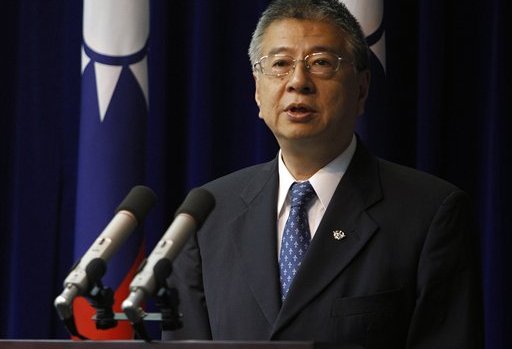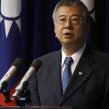
Game Change in the Western Pacific Region and R.O.C.’s Self-Defense Effort
Publication: China Brief Volume: 15 Issue: 9
By:

One of the key factors for the Obama administration to pursue in its “Rebalance to Asia” policy is to deal with current and potential security challenges posed by North Korean nuclear and missile threats. Another factor is Chinese expansion of air and naval activities, both in the East China Sea and the South China Sea, which could add tension and escalation in areas of existing territorial disputes among claimants. U.S. efforts to work with major allies in Northeast Asia are intended to shore up deterrence capabilities in the wake of emerging anti-access and area denial (A2/AD) threats. Taiwan inevitably is facing challenges and threats in the course of the military and security game change in Northeast Asia. In addition, Taiwan’s challenges and threats are more imminent than those of U.S. allies in the region.
First, although peace and stability across the Taiwan Strait have been enhanced as a result of peaceful engagement between the two sides of the Taiwan Strait, the military threat from mainland China has remained a daily reality, as Beijing still holds the option to employ the use of force to achieve political unification.
Second, a cross-strait military imbalance has been created as a result of increasingly rapid military modernization by mainland China. Taiwan’s current defense posture, compounded by financial constraints, will soon become obsolete in terms of facing the People’s Republic of China’s (PRC) imminent military threats.
Taiwan’s Efforts in Coping with Security Challenges
The PRC’s announcement of an Air Defense Identification Zone (ADIZ) in the East China Sea in November 2013 poses an immediate security challenge to Taiwan’s current self-defense posture, as it overlaps the Taiwanese ADIZ (TADIZ) by 23,000 square kilometers and extends very close to Taiwanese territorial waters (12 nautical miles) off the northern portion of the island. The Taiwanese government has put forward a modest protest to the mainland and has urged all parties involved to pursue peaceful resolution of the issue.
Economically, Taiwan’s survival is closely linked to the sea. Its international trade, as well as import of energy and agricultural products, is dependent on sea lanes of communication (SLOC). Consequently, the ability to control the air and waters surrounding Taiwan is necessarily an integral part of Taiwan’s defense planning. According to the Republic of China’s (ROC) 2013 Quadrennial Defense Review (QDR), the ROC’s military strategy is to pursue “resolute and credible” self-defense in order to deter and defeat military threats. This military strategy is comprised of five elements:
- Defend territory. Bearing in mind that the PRC’s initial attack would be intended to create considerable damage, the ROC’s military strategy is to maximize a resilient defense in holding off the strike force until international support arrives. The goal is to buy time for external support in the course of demonstrating both military and political resolve.
- Dissuade the enemy from invading. The armed forces will demonstrate capability to inflict sufficient casualties on an opponent so as to deter them from any attempt to launch an amphibious attack operation. Such a capacity will require enhancing joint operational capability and fielding well-trained and well-equipped forces.
- Maintain air and sea lines of communications. Given that Taiwan’s survival depends on trade and imports, preservation of air lines of communication and sea lines of communication is considered indispensable. Therefore, the armed forces must be able to counter any attempt at isolating the island.
- Delay any enemy approach to Taiwan Island. Should deterrence fail, the armed forces must strive to defeat the enemy in transit across the strait through multilayered interdiction with air and naval forces. The goal is to trade space to buy time by creating attrition in the invading force.
- Deny the enemy lodgments ashore. Should interdiction fail to defeat an enemy invasion, the ground forces are to engage in defense-in-depth while also attacking any beachhead.
The ideal self-defense objectives, however, impose certain requirements on the ROC armed forces.
First, it requires considerably improved force planning. In order to fend off a surprise attack, it is essential to create “innovative and asymmetric” capabilities that exploit the enemy’s weaknesses while minimizing Taiwan’s own. Second, it requires improved joint operation among services. Third, it requires improved integration of weapon systems to reduce the decision cycle. Fourth, it requires improved force protection by means of hardening key facilities and infrastructure to support sustained defensive operations. These force modernization requirements and other self-defense enhancement measures are key priorities for ROC defense planners. Nevertheless, the ideas and requirements highlighted by the 2013 QDR should be jointly discussed by both the U.S. and Taiwan militaries, based on the Taiwan Relations Act, in order to identify the most feasible and adequate defensive measures and services not only for Taiwan’s self-defense but also providing Taiwan its rightful means to share the responsibility of protecting peace and security in the Western Pacific region.
Reset U.S.-Taiwan Defense Dialogue to Reinforce U.S. Rebalance to Asia
As discussed above, Taiwan and the United States have a shared common concern regarding the strategic and security game change in the Western Pacific region, particularly placing emphasis on the PRC’s increasing naval and air power projection in East China Sea. Provocation and tension escalation is on the rise following the Chinese announcement of its ADIZ over the disputed islands, causing a strong reaction from Japan and South Korea.
Both the United States and Taiwan should seek a window of opportunity to reset U.S.-Taiwan defense communication to evaluate Taiwan’s military transformation, based on the 2013 QDR, and at the same time identify areas of military and security cooperation to strengthen Taiwan’s traditional share of the regional security responsibility, namely TADIZ, to fill the gap in the U.S. efforts to rebalance toward Asia. Therefore, the United States and Taiwan should conduct military-to-military dialogue at three levels:
- Policy-level dialogue. It is important to bring about policy-level discussion to allow both the U.S. and Taiwanese top decision makers to develop common security and threat pictures and identify policy guidelines to cope with the changing security environment and deal with potential threats. This kind of discussion will assist both sides to improve understanding of each other’s military postures in the region and identify areas of mutual cooperation to enhance peace and security.
- Planning-level dialogue. The United States and Taiwan should conduct constructive discussion based on the 2013 QDR to attain a more realistic approach in the course of conducting military transformation. The discussion also will provide an opportunity for the U.S. Department of Defense to evaluate Taiwan’s defense needs and start early planning on U.S. assistance if required. This will help Taiwan improve its resource allocation and budgeting and will convince the Taiwanese government to allocate more funding.
- Service-level dialogue. Based on the intention to improve joint operation among services and better integration of weapon systems to reduce the decision cycle, it is necessary to reset the current service discussion to focus on jointness among services, with particular emphasis on enhancing the Taiwanese role in the course of participating regional humanitarian rescue and disaster relief (HA/DR) operations to support Taiwan’s contribution in enhancing regional stability and security.
The proposed three-level U.S.-Taiwan defense dialogue is a strictly legitimate activity in accordance with the U.S. Taiwan Relations Act. The U.S. Congress should encourage the executive branch of the U.S. government to approach Taiwan to start with agenda setting to cultivate Taiwan’s role in enhancing regional peace and security and sharing responsibility in the course of assisting the U.S. Rebalance to Asia to cope with emerging challenges and contingencies.
Efficiency and effectiveness of the U.S.-Taiwan three-level defense dialogue other key issues that need to be addressed. The substance and quality of the defense dialogue are not only the foundation to draw the road map of Taiwan’s badly needed asymmetric/innovative self-defense capabilities, they are also a critical reference to support the Taiwanese Ministry of National Defense’s position in the course of convincing the cabinet to allocate sufficient defense budget and receiving approval from the legislative Yuan in supporting resource funding for defense. Time is the most important strategic asset for Taiwan, as indicated by Hard ROC 2.0, a research report published by Center for Strategic and Budgetary Assessments, in December 2014. Both the United States and Taiwan should expend more effort to take proactive measures to speed up more effective defense dialogues.
Both the United States and Taiwan should also pay attention to the need of enhancing the experience and professionalism of Taiwanese military officers and personnel. Innovative and asymmetrical defense capabilities are difficult to be realized unless there are qualified and capable officers and personnel available to fully implement new strategies. Measures and efforts should be adopted in the course of conducting defense dialogues to provide schemes and opportunities for young Taiwanese officers and personnel to receive training and education in learning advanced asymmetrical joint operation concepts, skills and even technologies. Such efforts should be considered critically important in the course of conducting dialogue especially at the policy level.
While there are many ways to enhance U.S.-Taiwan defense dialogue and cooperation, however, it really depends on whether both sides are on the same page and share common views of the security challenges in the Western Pacific region and both grasp opportunities to enhance defense cooperation to protect peace and stability in the region.
The views expressed by the author are entirely his own personal views, which do not representing the position of the R.O.C. government or affiliated institutions.





